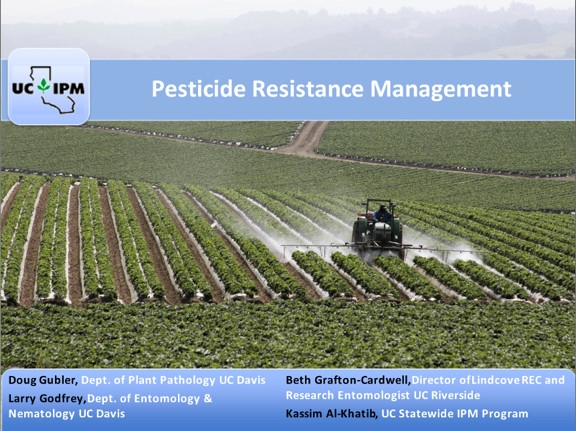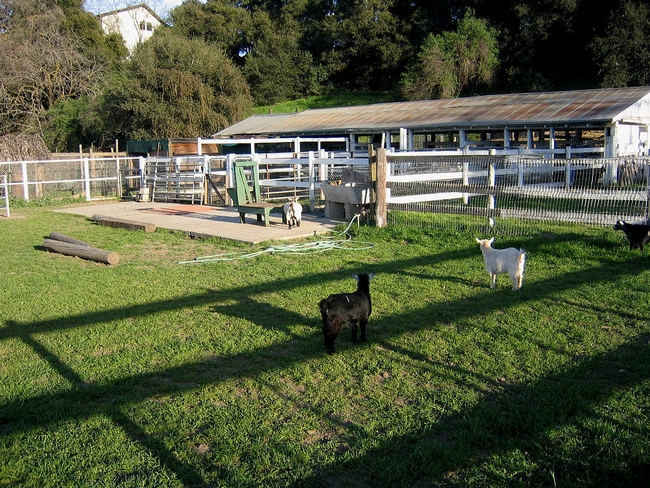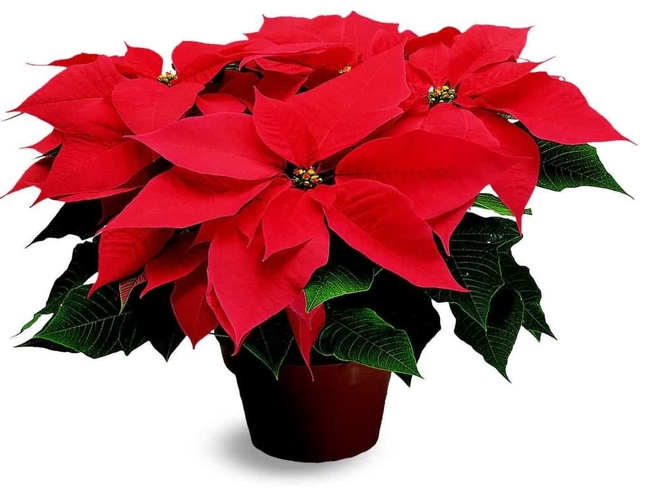From the UC Blogosphere...
Curious About Bats?
Curious about those insect-eating bats? Yolo County Farm Advisor Rachael Freeman Long, who has been researching and writing...
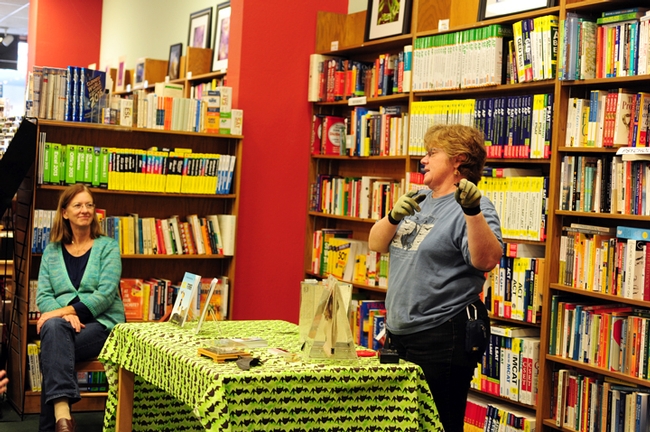
Rachael Long (left) and Corky Quirk talk about bats at an educational program at the Avid Reader, Davis. Quirk is holding a bat that's feeding on a mealworm. (Photo by Kathy Keatley Garvey)
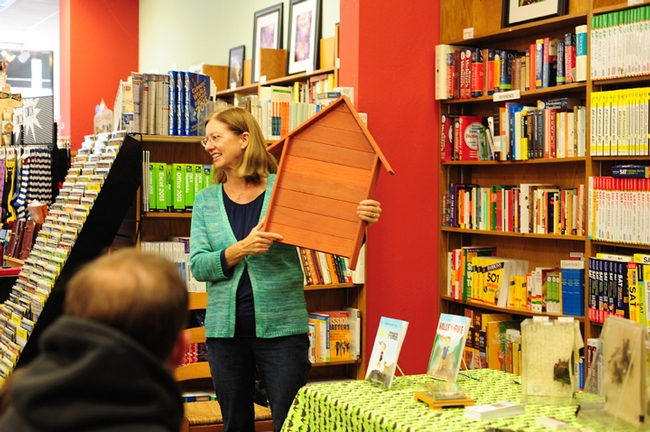
Rachael Long displays a bat house made by her friend Ben Frey of Hopland. (Photo by Kathy Keatley Garvey)
New Pesticide Resistance Online Course with Continuing Education Units
Author: Cheryl Reynolds, UC Statewide IPM Program
An online course highlighting how pesticide resistance develops among pests is now available on the UC IPM Web site. Created primarily for pest control advisors and other licensed pesticide applicators, this course describes the mechanisms of resistance in pathogens, insects, and weeds and discusses ways to manage resistance within the different disciplines.
The online course is divided into three narrated presentations followed by a final test for each section. This course has been approved for 2 continuing education units in the “Other” category from the Department of Pesticide Regulation.
This course is based on a series of workshops held in Davis, Fresno, and at the Kearney Agricultural Research and Extension Center during the spring of 2014 presented by Dr. Doug Gubler (Dept. of Plant Pathology, UC Davis.), Dr. Larry Godfrey (Dept. of Entomology and Nematology, UC Davis), Dr. Beth Grafton-Cardwell (Lindcove Research and Extension Center and UC Riverside), and Dr. Kassim All-Khatib (UC Statewide IPM Program).
Check out the new course at http://www.ipm.ucanr.edu/training/pesticide_resistance.html.
The Perfect Gift
So you're thinking about a holiday gift for someone who has everything. You've racked your brain trying to think of the...
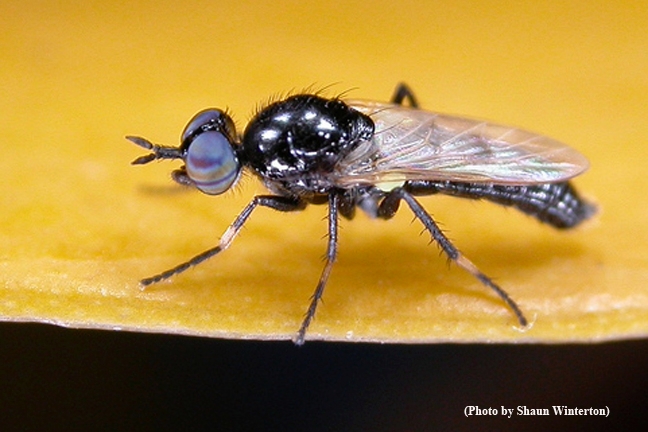
Shaun Winterton of the California Department of Food and Agriculture, an associate of the Bohart Museum, collected this stiletto fly, genus Agapophytus, and photographed it. It now needs a name. (Shaun Winterton Photo)
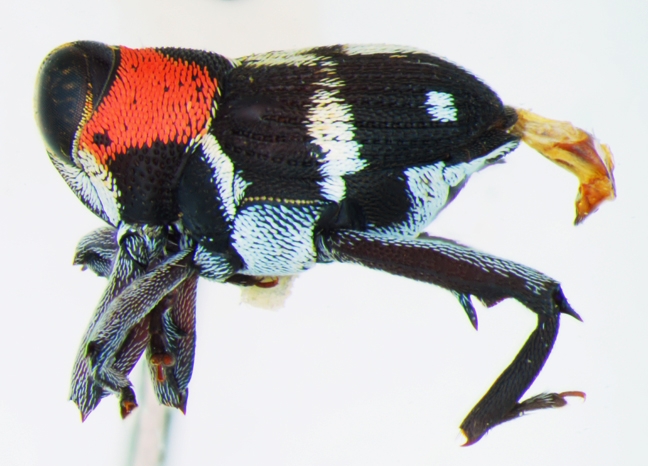
This weevil, found in a Costa Rica forest, is up for adoption: it needs a name. (Photo by Andrew Richards, Bohart Museum of Entomology)
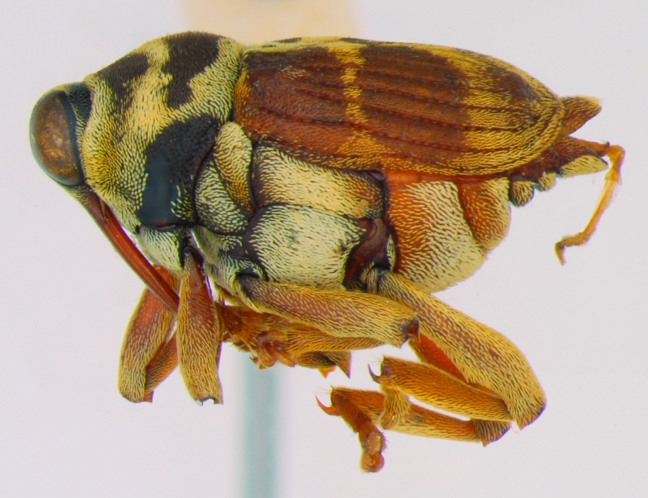
Here's another weevil, found in a Costa Rica forest, that needs a name. (Photo by Andrew Richards, Bohart Museum of Entomology)
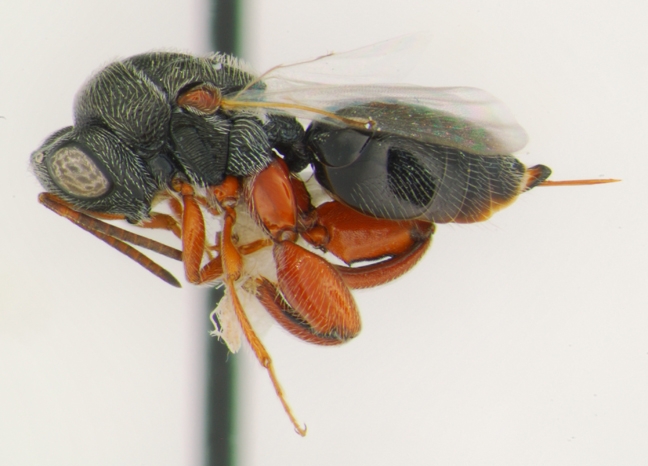
Bohart senior museum scientist Steve Heydon collected this new species of chalcid wasp in the Algonedes Dunes. Genus: Psilochalcis. It needs a name. (Photo by Andrew Richards, Bohart Museum of Entomology)
Santa Clara County 4-H youth raise animals in the Silicon Valley
Amid the high-tech companies and the densely populated suburbs of Santa Clara County, UC Cooperative Extension 4-H Youth Development maintains a vital animal husbandry program at the McClellan Ranch Preserve, reported Allison Williams in the San Jose Mercury-News.
The story said about 15 percent of the Rolling Hills 4-H Club membership are involved with the farm, and a large number of club members participate in other programs, such as entomology, cooking, Lego robotics and archery. But the premise of their involvement is the same whether they're at the farm or learning to handle a bow and arrow.
4-H is providing youth with hands-on learning opportunities intentionally designed around four essential elements
necessary for positive youth development. The program provides them supervised independence, a sense of belonging with a positive group, a spirit of generosity and opportunities to master life's challenges.
4-H co-leader Karen Clayton said she's been involved for four years and decided to help with the pygmy goat project because of her daughter's involvement.
“I think it teaches them leadership skills,” she said, adding that it shows the members that they have a voice.
The McClellan Ranch Preserve, a 23-acre public park in Cupertino, can accommodate steer, sheep, pigs, goats, mini-horses and chickens. In addition, the Santa Clara County UCCE Master Gardener program maintains a vegetable garden on the property.
Re-blooming a Poinsettia? Next Year?
Help for the Home Gardener from the Contra Costa Master Gardeners Help Desk
Client's Situation and Questions (in early September)
My questions:
When? How long? Do I water while it is in a dark spot?
When I do bring it out should I give it fertilizer? If so, what kind?
CCMG's Help Desk Response (in mid-September)
Thank you for contacting the Contra Costa Master Gardeners. Getting Poinsettia to re-bloom is a fairly simple procedure, though it requires care and follow through.
Poinsettia are a short day flowering plant, which means they begin the blooming cycle with the onset of shorter day length in the growing season. You will need to prevent your plant from receiving any light for 12 to 14 hours during the night. Starting at the end of September/ beginning of October you will need to cover it or place it in a dark space, such as a closet away from all artificial light starting around 5pm and then uncover it during the day around 8am and place it in a bright window. You will need to do this until the red bracts begin to form in about a month or two (usually in November). Just keep checking as you bring it out from cover each day. You will also want to keep the temperature below 70 degrees F and above 50 degrees F at night (55 to 60 degrees F being optimal). Don't leave it in the dark place all day and night for 2 months, it will die.
For watering you will want to water as you do during the normal growing season, just make sure it dries out between watering and that it does not sit in water or remain soggy. Poinsettias, being in the Euphorbia family, are somewhat drought tolerant and don't like to be over watered.
For fertilizer you can just use an all-purpose houseplant fertilizer at the recommended rates in the instructions. You will only need to fertilize when the plant is actively growing, not when it is flowering. That would mean no fertilizer when you bring it out of the closet and it begins blooming. Fertilizing during its active growth phase after it has finished flowering every 2 weeks to every month should be adequate, depending on how strong the fertilizer solution is.
For more information on Poinsettia care and re-blooming please refer to the following websites: http://urbanext.illinois.edu/poinsettia/index.cfm
http://faculty.ucc.edu/biology-ombrello/pow/poinsettia.htm
http://aggie-horticulture.tamu.edu/archives/parsons/flowers/poinsettia.html
Best of luck with re-blooming your Poinsettia.
Thanks again for your interest in Master Gardeners.
Contra Costa Master Gardeners Help Desk
Editor's Note: The Contra Costa Master Gardener Help Desk is available year-round to answer your gardening questions. Except for a few holidays, we're open every week, Monday through Thursday from 9:00 am to Noon at 75 Santa Barbara Road, 2d Floor, Pleasant Hill, CA 94523.
We can also be reached via telephone: (925) 646-6586, email: ccmg@ucanr.edu, and we are on the web at http://ccmg.ucanr.edu/



